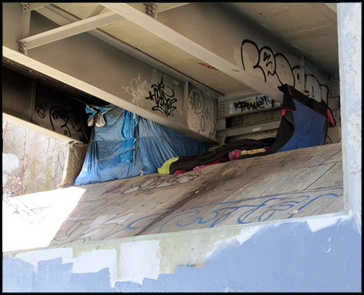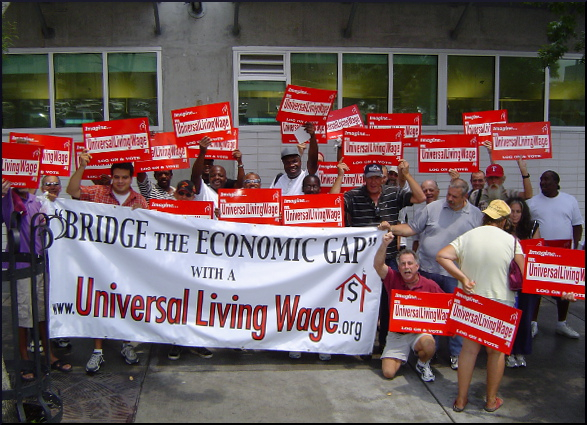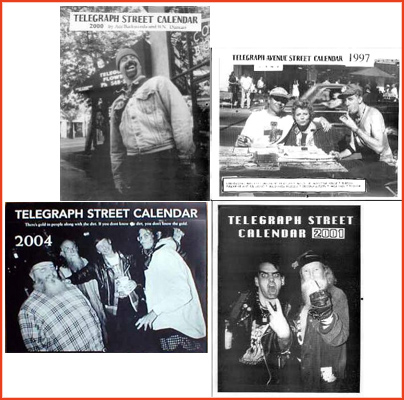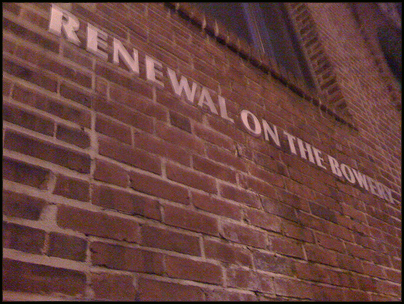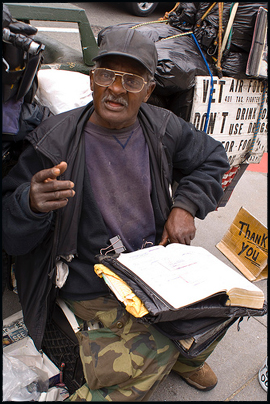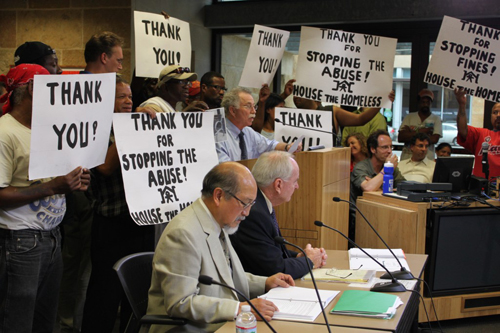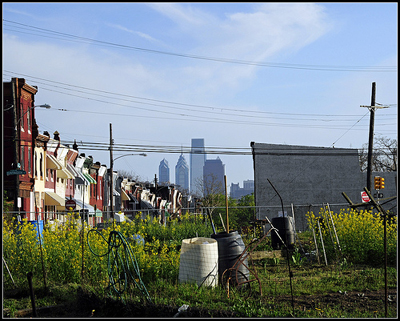
You might find Fatimah Ali on a sidewalk or in a store, talking to people about the need to house the homeless, offering them copies of a publication called One Step Away. Or you might find her putting the paper together along with her co-workers, the shelter residents, of whom she says,
I’ve found two common threads — compassion for each other and for those who may have hurt them, and determination to recover from whatever burdens they’ve encountered. Often it’s a long and arduous road finding the road back to stability, but it can be done.
Along with being a regular contributor to the Philadelphia Daily News, Fatimah Ali writes for One Step Away, and also serves as the homeless newspaper’s development manager. One Step Away, sponsored by the nonprofit Resources for Human Development, is designed to emulate similar street newspapers established in other cities. Known for its vision and creativity, the paper was recently honored with a Community Service Award by the Philadelphia, Pennsylvania chapter of the NAACP.
Readers of Looking Up at the Bottom Line will recall the significance of Philadelphia, where Richard R. Troxell, a veteran experiencing homelessness, learned the art of community organizing from consumer rights activist Max Weiner. He later formulated the Philadelphia Stabilization Plan and was invited to submit it to the search for best practices initiatives sponsored by the United Nations International Year of Shelter for the Homeless (1987).
Getting back to One Step Away, the name refers to the very small margin of error that exists between being housed and being homeless. Ali says,
My mission is to encourage everyone to care about homelessness because so many people are just a paycheck or two away from having the bottom fall out… Not every homeless person is strung out, uneducated or lazy. Plenty of folks just got a bad break, or had banks that took advantage of them.
How many examples of bad breaks can we think of? Well, first, there are the literal breaks. If, tomorrow, one of your legs was fractured in three or four places, how do you see the future scenario playing out? For many Americans, homelessness is quite literally only one “bad break” away: The building your apartment happens to be located in burns down, or maybe there’s a foreclosure in your future.
Job loss is another vicious jolt on the path of life, obviously. Some unemployment situations do not arise from quitting, or being fired or laid off. If you’re a private-duty nurse, for instance, your patient might expire. In better times, you would take another case. In hard times, another patient might not be available, for reasons having to do with the economy in general. Whether or not it appears in the statistics, it’s a job loss.
One Step Away debuted in December 2009 and is published monthly in tabloid format. The distributors are people experiencing homelessness and joblessness. Most of the content originates with residents of the Woodstock Family Shelter and the Ridge Shelter. Affordable housing is only one of the issues discussed and worked for. It included, for instance, the World Homeless Awareness Day, which was October 10. Fatimah Ali was disappointed that very few other news sources even mentioned it.
True, it doesn’t seem to be widely recognized based on a search on Google either. But then, we have an entire week coming up in November, the National Hunger and Homelessness Awareness Week. The important thing to remember is the second meaning of the paper’s title, One Step Away. The folks who work on it are also busy keeping the faith, believing that they are one step away from getting off the street. As Ali reminds us,
For every hard-luck story that ends in failure, there are also those who successfully turn their lives around and work miracles for their own self-empowerment.
Source: “Philadelphia’s homeless citizens are still under the radar,” Philadelphia Daily News, 10/12/10
Source: “One Step Away, Philadelphia’s first street newspaper, gives voice of advocacy to city’s homeless,” Resources for Human Development, 12/15/09
Image by Tony the Misfit, used under its Creative Commons license.

